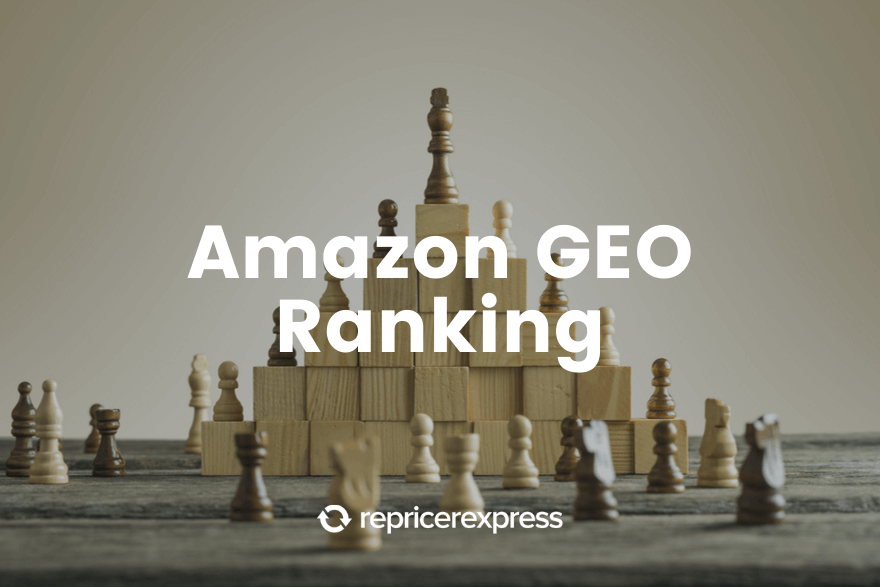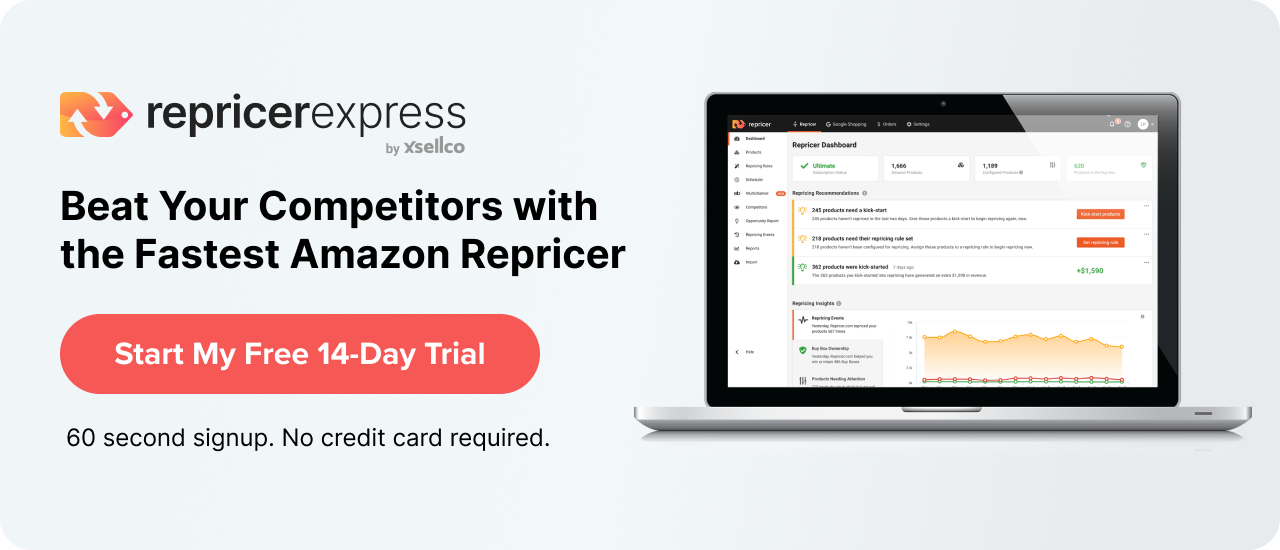You likely know a fair amount about how to rank higher on Amazon, but if you’re not maximizing geo ranking, you could be losing out on sales. RepricerExpress will break down what geo ranking is, how it can help you increase sales, and the best tips to use.
What is Amazon Geo Ranking?
There are many different factors that go into how products are ordered in search results. Although the exact algorithm is a secret, one of those factors is known as geo ranking, which takes into account the shopper’s location and the searched product’s location.
For example, let’s say someone’s shopping for pet food bowls in Colorado. Amazon might see that three warehouses within a day’s drive store pet food bowls but five don’t, so they’ll prioritize the types of pet food bowls in those three warehouses. Maybe the other five warehouses have nicer pet food bowls, but they’re farther away so they’ll rank lower in the search results.
This is because Amazon knows its shoppers value convenience and timely deliveries. If a buyer has the option between 1-2 day delivery and the same thing arriving in a couple of weeks, they’ll choose the faster option almost every single time.
In simpler words, the shorter the shipping and delivery window, the higher the conversion tends to be. For this reason, products that are in closer physical proximity to the consumer get shown higher in search results than products that are further away and would take longer to arrive, aka geo ranking.
How Can You Make Geo Ranking Work for You?
Imagine that you have 100 units of a hot gadget in your inventory. You have to decide which Amazon fulfillment centres you send them to, but how do you settle on which ones? You’ll want to make sure that there are enough units at each fulfillment centre so you don’t run out of stock. However, you’ll also want to distribute the units to various warehouses to take advantage of geo ranking.
Then the question becomes how many fulfillment centres do you want to house your products? If you spread out the 100 across 10 centres, does that cover one-day shipping? Possibly, but what about strategically identifying cities where demand is higher for your product? Do you store fewer units at more warehouses and risk running out of stock? And how does that affect storage fees – does your profit margin allow you to pay storage fees at more locations or would it be more cost-effective to lose the potential few sales but pay less by worrying about fewer fulfillment centre storage fees?
It’s important to note that geo ranking is the sole cause of an increase or decrease in your sales. It’s but one of many factors that influence your sales volume, but it can be an important one. When you plan out which fulfillment centres to send your products to, make sure you’re doing careful research into which locations are best.
Going back to the pet food bowls example, think about what kind of audience you have and what locations they’re most likely to buy from. College or university towns are likely out because they’re not as likely to contain as many pet-owners as there might be in suburbs. Are your pet food bowls especially fancy or of high-quality? Try targeting cities with a higher-than-average income who have the luxury of spending more.
Make Sure Everything Else is Optimized to Take Advantage of Geo Ranking
As we said before, geo ranking is only one of the factors in Amazon’s A9 algorithm that affects where your products show up in search results. If you’ve strategically passed around your inventory to what you think are the right cities but you’re still not seeing a difference in search results, consider other factors that could be limiting first page showings.
We’ve written many times before about how to optimize your listings and how to improve your Amazon product listings, so we’ll skip over that for now in favour of other tips.
One of them, which we briefly touched on earlier, is inventory management. At the root is your starting inventory, which is how many units you’ve manufactured or sourced from a manufacturer or supplier. From there, you decide how many units to send to a fulfillment centre, or whether to break that up into large chunks and send out to other fulfillment centres.
It’s important at this step to take into account (long-term) storage fees and how quickly your inventory will move at certain locations. Send a batch to the “wrong” location, and it could be sitting there, accumulating expensive fees. But if you swing to the other end and get too eager at doling out shipments, you could be facing an inventory shortage at some locations and possibly high costs at moving it to another location.
Another tip to think about is your inventory performance index (IPI), which takes into account excess inventory, sell-through rate, in-stock inventory and stranded inventory. Based on your performance in these areas, your IPI gets a numerical score from 0-1000. The cutoff for a poor IPI score is 400, at which you could face consequences like storage restrictions and higher storage fees. Although you should work very hard at keeping your IPI above 400, the score is recalculated every quarter, so you get the chance at changing your score regularly.
Final Thoughts
While geo ranking is one of the factors that can influence how high your search results are, it’s definitely not the only factor. One of the most important is still aggressive pricing, which is where RepricerExpress comes into play. Once you set your pricing rules, we’ll run in the background and update them when thresholds are met, ensuring you always have the best odds of ranking as highly as you can. Quit repricing products manually and sign up right now to start your free trial.






